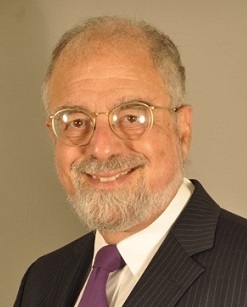
Aaron Marcus and Associates (AM+A), Berkeley, California, United States
Participants should be generally familiar with user-interface development steps (planning, research, analysis, design, evaluation, implementation, documentation, training) and user-interface components (metaphors, mental models, navigation, interaction, and experience), but may have little or no experience in science-fiction or the history of movies and television.
Participants can use their knowledge of user-experience design, interaction design, visual design, software/hardware engineering, ethnography, anthropology, and usability analysis to find new insights in this course and new ways to apply their expertise and experience.
Concepts covered to assist professionals to design more effectively are these:
This tutorial present examples from science-fiction films and videos that incorporate human-computer interaction (HCI) and user-experience (UX) design and explains what lessons can be learned. The course begins with the advent of movies in the early 1900s (e.g., Méliès' "A Trip to the Moon," which was later referenced in the movie "Hugo", 2011) and concludes with the latest sci-fi movies/videos centered on AI. Originally, many science-fiction movies, taking their cue from pulp science-fiction, focused on rocket ships and interplanetary travel. Later the scope of the stories broadened and deepened to future consumer products, psychological/social issues, and new technologies such as exoskeletons, robots, and artificial intelligence. Once a rarified genre and primarily products of Hollywood (with notable films from Germany, the United Kingdom, and Japan), these films/videos now occupy a primary place in modern international popular media, and originate in China, India, South Korea, and Japan, as well as North America and Europe.
For many decades sci-fi movies showed technology in advance of its commercialization (for example, video phones and wall-based television displays, hand-gesture systems, virtual reality displays, and artificial-intelligence (AI)-based robots). In some cases, mistaken predictions about what is usable, useful, and appealing were adopted, sometimes because of their usefulness to cinematic story-telling. In any case, these media have served as informal "testbeds" for new technologies of human-computer interaction and communication. They provide ample evidence for use in heuristic evaluations, ethnographic analyses, market analyses, critiques of personas and use scenarios, and new approaches to conceptual and visual design. As examples of speculative fiction, they have use beyond their entertainment value.
The course will explore issues of what is futuristic and what is not, attitudes towards technology, gender-role differences, optimism/pessimism about technology and society, and user-centered design characteristics (including typography and sign systems) in more than two dozen films and a half-dozen television shows from Europe and North America. Examples from China, India, South Korea, and Japan also will be referenced.
Many new examples of films from 2020-24 are cited and illustrated, including “Space Sweepers” (South Korea, 2021), “Dune” (USA, 2021), “Avenue 5” (USA, 2022), “The Peripheral” (2022), and “The Creator” (2023). Each year, new content is added to reflect the latest movies, videos, and trends. In addition, several new books about sci-fi movies have been published, such as Fantastic Planets, Forbidden Zones, and Lost Continents: The 100 Greatest Science Fiction Films, which are referenced, as well as the 2019 sci-fi exhibit “Cowboys in Space”, first shown in Austin, Texas, at the Bullock Museum. During a coffee break, for those who return quickly, some slides from that exhibit will be shown. As always, the tutorial notes show all lecture slides.
Participants will be informally quizzed about their recognition of the media examples shown and about their analysis of contexts, technologies, business models, user communities, and designs. Discussion with participants about the significance of the film/TV examples throughout the presentation will be encouraged. Participants in this course will understand how science-fiction movies and television have/have not incorporated fundamental principles of user-centered design to achieve usability, usefulness, and appeal; will understand the development of science-fiction in the popular media over the past 120 years; and will understand better how to apply their professional knowledge to look at popular media with a critical eye.
Lecture 0: Introduction to instructor and tutorial (about 15 minutes)
Introduces schedule, objectives, speaker's credentials, and participants.
Rockets, Robots, and AI: Lessons Learned from Science-Fiction Movies/TV for HCI/UX (about 160 minutes)
This lecture introduces key terminology and concepts regarding the user-interface design/user-experience design, science-fiction narratives, and discusses the history of science-fiction movies and television. The lecture is continually updated with new publication references, additional film/TV references, and latest-trend concepts, such as robots and artificial intelligence.
The target audience for this tutorial includes those professionals, academics, students, and researchers who are familiar with computer graphics, but may be new to user experience/human-computer interaction/communication (UX/HCI) concepts and who may be new to thinking about science-fiction movies and television shows in the context of UX/HCI design, but presumably have a strong interest in this topic.

Aaron Marcus is a Fellow, AIGA; a Member, CHI Academy; a Member, ICOGRADA Graphic Design Hall of Fame; an ACM Distinguished Engineer; Editor-in-Chief Emeritus, UXPA magazine User Experience; Editor, Information Design Journal; Co-Director and Founder, Design, User-Experience, and Usability conference; and publisher of 54 books and 350 articles. He is founder (1982)/Principal of Aaron Marcus and Associates, Berkeley, CA, the only graphic designer to be awarded a DARPA research contract (1982-85), and supervised about 500 HCI/UX projects for about 300 clients worldwide, including Apple, HP, Motorola, Microsoft, Oracle, Ricoh, and SAP. He tutors worldwide since 1980.